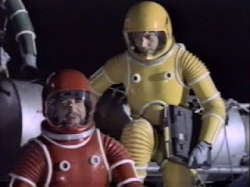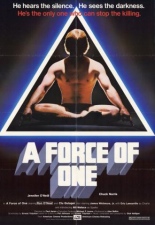
 Hypothetically, say two of your fellow police officers turn up dead, both with their windpipes smashed. Would you theorize the following: “Maybe it’s one of them karate weirdos like in the movies!” The hypothetical is also a rhetorical, because that’s what happens in the Chuck Norris film A Force of One.
Hypothetically, say two of your fellow police officers turn up dead, both with their windpipes smashed. Would you theorize the following: “Maybe it’s one of them karate weirdos like in the movies!” The hypothetical is also a rhetorical, because that’s what happens in the Chuck Norris film A Force of One.
Thinking they’re up against a “karate killer,” detective Dunne (Clu Gulager, The Return of the Living Dead) brings in professional sparrer Matt Logan (Norris) to train his narcotics squad, which includes Scanners‘ Jennifer O’Neill, top-billed, yet made to look as manly as her character’s name sounds, Mandy Rust.
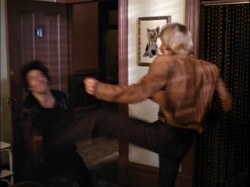 After the karate killer strikes again, Dunne orders, “These karate people: Check ’em out!” Even Logan begins to question it, thinking perhaps the murderer is someone he and his punching pals know closely. Without giving away the culprit’s identity, I would like to note that naturally, the final fight occurs in slow-motion and sans shirts.
After the karate killer strikes again, Dunne orders, “These karate people: Check ’em out!” Even Logan begins to question it, thinking perhaps the murderer is someone he and his punching pals know closely. Without giving away the culprit’s identity, I would like to note that naturally, the final fight occurs in slow-motion and sans shirts.
Made back when Norris was considered a popular entertainer, as opposed to right-wing loon, A Force of One is a decent marriage of his considerable martial-arts skills and the constructs of the action genre. The fun supporting cast includes Super Fly himself, Ron O’Neal; Bill “Superfoot” Wallace (L.A. Streetfighters); Eric Laneuville (TV’s St. Elsewhere) as Logan’s son, so let that sink in, if you know who Laneuville is; Chuck’s brother, Aaron Norris, who co-choreographed all the kicking; Chuck’s son, Michael Norris, as “Pizza Skateboarder”; and Chu Chu Malave. I don’t really know who that is, but I sure enjoy saying his name. —Rod Lott

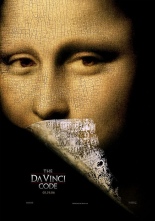
 When Dan Brown’s
When Dan Brown’s 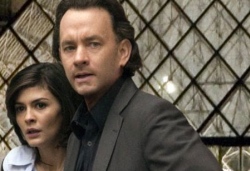 It makes one colossal mistake: treating the source material as if it were literature. Look, I loved reading Code, but it’s a B-level thriller. Screenwriter Akiva Goldsman treats it as if it were a work of serious art, where every sentence had been constructed with precious care, like a Jenga tower, with designs on a Pulitzer Prize. In doing so, the fun is sucked clean out of it, leaving us with one history lesson (and quasi-history lesson) after another, all of which numb our attention. Although it hews closely to the original story, there’s nothing here that sheds light on why the novel sold 2 bazillion copies and counting.
It makes one colossal mistake: treating the source material as if it were literature. Look, I loved reading Code, but it’s a B-level thriller. Screenwriter Akiva Goldsman treats it as if it were a work of serious art, where every sentence had been constructed with precious care, like a Jenga tower, with designs on a Pulitzer Prize. In doing so, the fun is sucked clean out of it, leaving us with one history lesson (and quasi-history lesson) after another, all of which numb our attention. Although it hews closely to the original story, there’s nothing here that sheds light on why the novel sold 2 bazillion copies and counting. 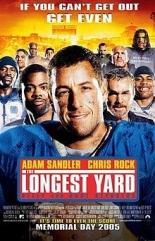
 The original
The original 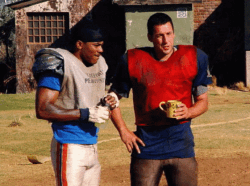
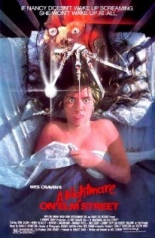
 I am unconvinced that Wes Craven is a great horror director. I’m not honestly sure he’s even a good one. His filmography is at best spotty; some watchable films, many outright stinkers, one great grindhouse flick (
I am unconvinced that Wes Craven is a great horror director. I’m not honestly sure he’s even a good one. His filmography is at best spotty; some watchable films, many outright stinkers, one great grindhouse flick (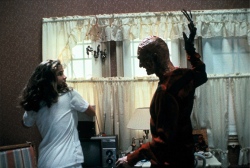
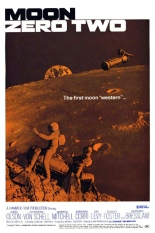
 Hammer Film Productions was and is known for horror, but give the group credit for its one and only attempt at a sci-fi Western in
Hammer Film Productions was and is known for horror, but give the group credit for its one and only attempt at a sci-fi Western in 